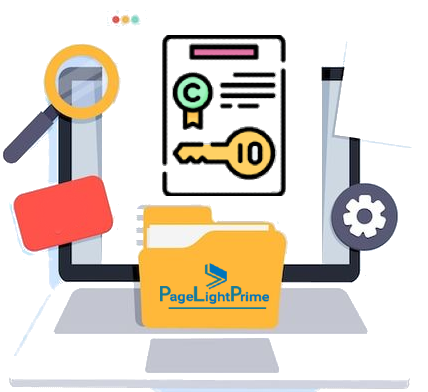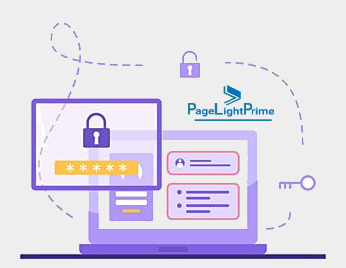Ensuring Data Integrity: Best Practices for Legal DMS Implementation
In the dynamic landscape of legal practice, effective document management is a critical facet that demands precision, security, and efficiency. As law firms and legal departments navigate through an increasing volume of data, the implementation of a robust Document Management System (DMS) becomes imperative. This blog explores best practices for ensuring data integrity when deploying a Legal DMS.
Written by Knowledge Team, posted on November 30, 2023

Defining Data Integrity in Legal Context
Data integrity, in the legal sector, encompasses the accuracy, consistency, and reliability of data throughout its lifecycle. In an arena where documentation underpins every case, maintaining the integrity of information is not just a best practice but a legal requirement. Any compromise in data integrity can lead to severe consequences, including legal and financial ramifications.
Best Practices for Legal DMS Implementation
Comprehensive Needs Assessment
Before adopting Legal Document Management Software, conduct a comprehensive needs assessment. Understand the unique requirements of your legal practice, including factors such as case volume, document types, collaboration needs, and compliance standards. This assessment forms the basis for a tailored DMS solution aligned with your organization’s specific needs.
User Training and Awareness
Invest in user training and raise awareness about the significance of data integrity. Ensure all users, from attorneys to support staff, are proficient in the DMS’s proper use. Training programs should cover document creation, version control, access permissions, and secure sharing practices. This enhances system efficiency and minimizes the risk of inadvertent errors.

Access Control and Permissions
Implement robust access controls and permissions within the DMS. Different roles within a legal organization require varying levels of document access. Limit access to sensitive information to authorized personnel and regularly review and update permissions to align with staff changes and case requirements.
Version Control Mechanisms
Legal cases often involve multiple document drafts. Implement a robust version control mechanism to track changes, preserve document history, and prevent version conflicts. This enhances collaboration and ensures the most recent and accurate document version is always accessible.

Data Encryption and Security Measures
Prioritize data security by implementing encryption protocols for data transmission and storage. Leverage multi-factor authentication to enhance user authentication processes. Regularly update security protocols to stay ahead of emerging threats and vulnerabilities.
Time Tracking Integration with DMS
Integrate time tracking functionalities with taxonomy and enterprise keywords to improve efficiency. Connect time tracking features with these elements to attribute time spent on specific document categories or topics. This integration provides valuable insights into resource allocation and supports accurate billing practices.

Integration with Legal Research Tools
Integrate the DMS with legal research tools to enhance document accuracy and relevance. This allows users to cross-reference and validate information seamlessly, making the DMS a powerful tool for maintaining data integrity.
Regular Audits and Monitoring
Establish a routine schedule for data audits and monitoring. Regularly assess the integrity of stored data, track user activities, and identify anomalies or unauthorized access. Automated monitoring tools provide real-time alerts for prompt action in the event of security breaches or data integrity issues.
Data Backups and Disaster Recovery
Implement a robust data backup and disaster recovery strategy. Regularly back up all legal documents and store backups in secure offsite locations. A well-defined disaster recovery plan ensures critical data can be restored quickly, minimizing downtime, and preserving data integrity.

Compliance with Legal Standards
Ensure your Legal DMS complies with industry-specific and regulatory standards. The legal profession is subject to numerous regulations governing the handling and storage of sensitive information. Implement features such as audit trails and data retention policies to facilitate compliance.
Legacy Migration Strategy
Develop a comprehensive strategy for legacy migration that includes a detailed plan, milestones, and contingency measures. Collaborate with IT specialists to mitigate risks associated with data migration and to ensure a smooth transition without compromising data integrity.
Regular Software Updates and Patch Management
Keep the DMS software and associated tools up-to-date with the latest patches and updates. Regular updates ensure the DMS remains resilient against emerging threats, safeguarding data integrity.

Governance Committee
Establish a Governance Committee dedicated to overseeing the implementation and ongoing management of the Legal DMS. This committee should comprise representatives from IT, legal, compliance, and other relevant departments. The Governance Committee plays a crucial role in decision-making, policy development, and ensuring alignment with organizational goals.
Responsibilities of the Governance Committee Capabilities
- Define and enforce data governance policies, including taxonomy standards, access controls, and compliance measures.
- Oversee user training initiatives, ensuring that all staff members are adequately educated on DMS best practices and compliance requirements.
- Monitor and address any security concerns or data integrity issues that may arise during implementation or regular operation.
- Regularly review and update the DMS strategy to align with evolving organizational needs and industry standards.
- Serve as a point of contact for issue escalation, resolution, and communication with relevant stakeholders.

Regular Committee Meetings
Schedule regular committee meetings to review progress, discuss challenges, and strategize improvements. These meetings should provide a platform for cross-departmental collaboration and ensure that the DMS continues to meet the organization’s goals effectively.
Continuous Improvement
Foster a culture of continuous improvement within the Governance Committee. Encourage members to share insights, propose enhancements, and stay informed about emerging technologies or changes in the legal landscape that may impact DMS functionality.

Documentation and Reporting
Maintain thorough documentation of committee decisions, policies, and actions taken. Provide regular reports to leadership on the status of the DMS implementation, including key performance indicators, security measures, and user compliance.
Training and Awareness Programs
Collaborate with the training department to develop ongoing awareness programs, ensuring that users stay informed about updates, new features, and any changes in governance policies. This proactive approach minimizes the risk of user errors and enhances overall DMS adoption.

Conclusion
Implementing a Legal Document Management System is a strategic move for law firms and legal departments aiming to streamline workflows and enhance collaboration. Success in this implementation depends on ensuring the integrity of the data housed within the system. By following these best practices, legal professionals can mitigate risks, uphold compliance standards, and fortify the foundation of their practice with a secure and reliable Legal DMS. In a legal landscape where information is power, data integrity is the key to unlocking success.
